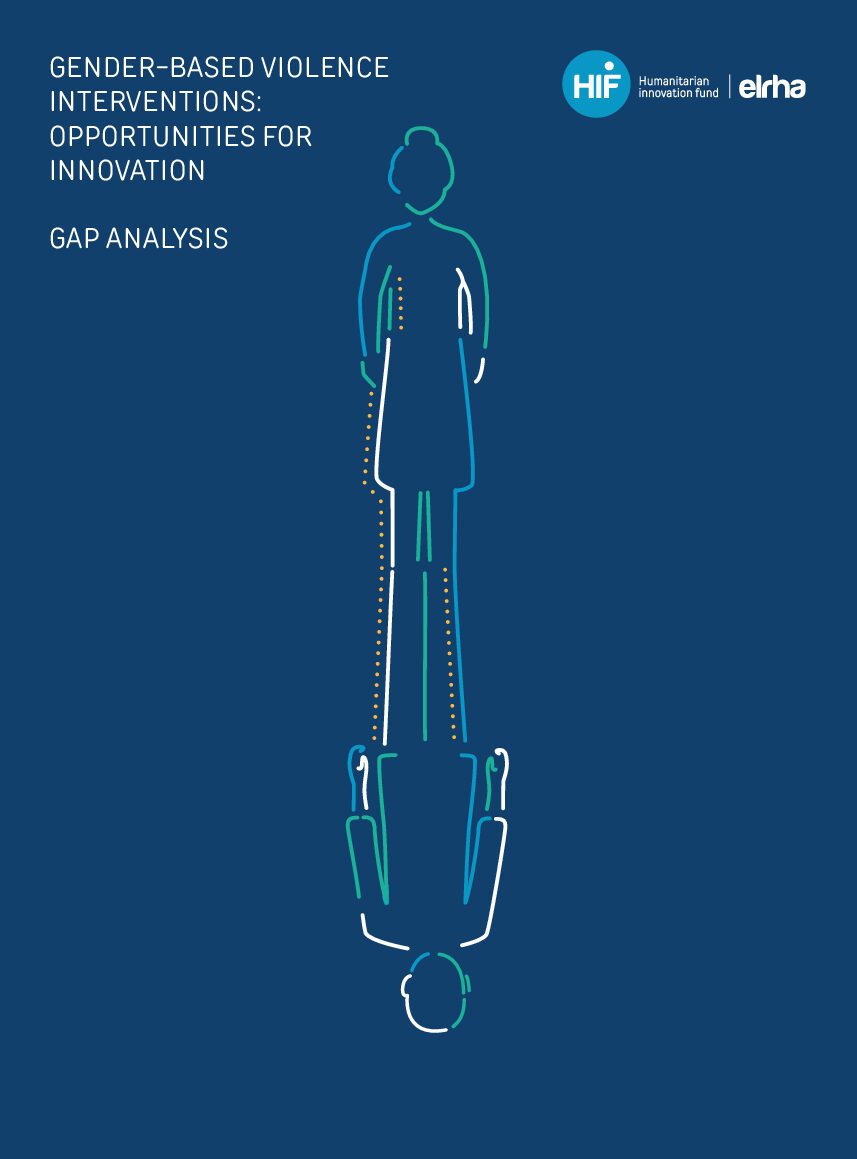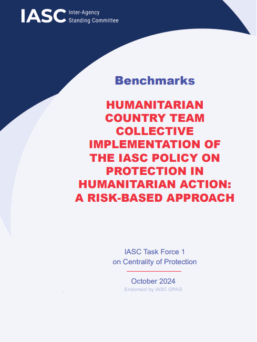This gap analysis commissioned by the Humanitarian Innovation Fund (HIF) is the first gap analysis of specific challenges in GBV humanitarian programming through the lens of humanitarian innovation. The analysis and report, conducted by the Small Arms Survey, offers guidance on tangible innovation areas for those working to improve GBV globally to enhance effectiveness and accelerate impact. The research identified “innovation challenges” to address the gaps in GBV programming and aims to engage new actors and partners from different arenas to overcome enduring GBV challenges.
The two Key Considerations identified and articulated as essential requirements for implementing effective GBV programs in emergencies are:
1. Involving local stakeholders in problem identification and solving
2. Ensuring GBV services are accessible for target groups and in hard-to-reach areas
The report also highlights four Challenge Areas and corresponding, actionable innovation challenges:
1. Improving monitoring and evaluation
2. Increasing the availability and quality of GBV expertise
3. Improving GBV coordination and prioritization
4. Adapting standards for practical use in a variety of contexts
A few of the highlighted considerations and challenges areas above are particularly relevant for results-based Protection.
- Key Consideration #1: Involving local stakeholders in problem identification and solving
A results-based approach demands that we start with the affected population and understand how stakeholders at all levels can contribute to addressing a protection issue. By using methods to involve local stakeholders, including the affected population, from the beginning and throughout the program cycle, including analysis, design, implementation, and learning, we can better inform a context-specific analysis of the problem, and ensure that a response is designed and implemented to address the pattern of risk in that specific context.
- Including local communities are involved in the design and implementation of GBV prevention and response, including through co-designing approaches and by allowing local actors to take the lead in design and implementation during emergencies
- Using advocacy, training, and accountability to target non-state armed groups in order to better address the threat component of risk
- Challenge Area #1: Improving monitoring and evaluation
- Innovation Challenge 1.1: Measure the impact of GBV programs
- Innovation Challenge 1.2: Develop real-time monitoring tools
Results-based protection emphasizes that there are measurable components of a protection response. With a comprehensive, context-specific analysis we can identify the specific patterns of risk we are working to address. By articulating through a causal logic the anticipated changes in attitude/knowledge, behavior, policy, and practice that we are working towards in order to reduce a protection risk, then we can track our progress towards achieving those results. Finally by ensuring effective M&E systems that are designed to help us learn and responsive decision-making and action, we can better ensure flexible and adaptable programming.
– A need for community-level data in order to more effectively monitor and evaluate interventions.
– The lack of a robust data meant that perceptions of the changing nature and scope of GBV during the humanitarian emergency could be not be verified, and as a result interventions could not necessarily adjust to the evolving situation. This calls for a need to share more in-depth information on root causes and triggers of GBV with all relevant stakeholders while still maintaining standards of protection information management
– To use more innovative methods for collecting relevant data that can monitor trends. New technologies—for instance the use of mobile devices, crowd-mapping—are starting to be used by GBV actors in several contexts and are used by other disciplines, for example peacebuilding and development. Encourage information sharing, lessons learned in M&E across humanitarian sectors and also from other fields such as peacebuilding and development.
– The evaluation process should be integrated within the overall GBV program
– To ensure that the proposed evaluation method is suitable for the given context and culture, it should be designed in collaboration with local affected people.
– A need to develop real-time monitoring tools that are culturally appropriate
– Co-design new methods/tools from fields and domains of expertise outside the GBV sector may offer new perspectives
- Challenge Area #3: Improving GBV coordination and prioritization
Innovation Challenge 3.3: Encourage collaborations between humanitarian and development actors
A results-based approach to protection often requires the effort from a multi-disciplinary and multi-sectoral set of actors. By identifying, mobilizing, and designing for the contribution of multiple actors, including humanitarian and development actors, we can better understand the unique relationships and synergies for achieving protection outcomes.
– Create open spaces for communication between GBV practitioners to engage in open and constructive conversations about their work, as well as the nature and language of GBV – including by seeking opportunities to facilitate knowledge-sharing across regions and prioritize next steps for action
– Include local stakeholders in the prioritization, design, and implementation of GBV response
– Enable collaboration between development and humanitarian actors, acknowledge ethical considerations, and ensure the prioritization, sustainability, and accountability of GBV response
The Executive Summary, Full Report, and a recording of the launch event are available here.



